Angkor Wat Temple
Location: 5.5 km north of Siem Reap. On the road the Angkor Complex, Angkor temple is the biggest and the first temple reached.
Best time to visit: At sunrise or sunset. Should start around 5-5.30am from your hotel for sunrise (in sunny season- April/ May)
Ticket: There are 3 types of passes available: 1-day pass, 3-day pass, 1-week pass. Please check out more detail here
Dress code: Long pants (covering your knees) and shirts (covering your shoulders). It is important to wear properly when visiting the temples to show the respect to the place and the country.
Travel tips: travel with a local guide or a guide book to clearly understand the temple’s mystical story.
How to visit Angkor Wat: There are many different ways to visit the Angkor Wat depending on your budget, how long you stay and how you want to experience the city. You can travel by Tuk-tuk (15$-40$/ day), bikes/ motor scooters (8-10$/day), bicycles (2$ -4$/day).
“Angkor Wat” History
Angkor Wat is the world’s largest religious monument and is considered as a masterpiece of humankind which was built during the reign of Suryavarman II, in the first half of the 12th century. The total area is almost 200 hectares. Within the 82 hectares of the outer enclosure, the temple itself stands in the middle on a terrace measuring 332 x 258 m, nearly 9 hectares.
The term Angkor Wat is the combination of 2 words: “Angkor” is derived from sanskirt word ‘nagara’, means city or capital. And “Wat” means temple or pagoda.
Angkor Wat was abandoned as Cambodia’s capital city in the 2nd quarter of 15th century. The region has been continuously inhabited up to modern time. In this period, Angkor Wat is continuously maintained among many new temples and open for public visiting nowadays.
Symbolism
Angkor Wat is a ‘miniature replica of the universe‘ or as ‘a microcosm of the Hindu‘. The moat surrounding the temple complex symbolizes the oceans surrounding the earth. The center temple represents the mythical mountain, Mount Meru, the home of gods, which is located in the center of the universe. Five towers peaks represent Meru’s peaks.
Angkor Wat was constructed as a funeral temple for King Suryavarman II and oriented to the West while most temples in Khmer face to the East. Recently, there are a lot of explanations about this, one reason is because the temple is dedicated to Vishnu who is the God of West. The other explanation is that the temple is an association with the direction of death.
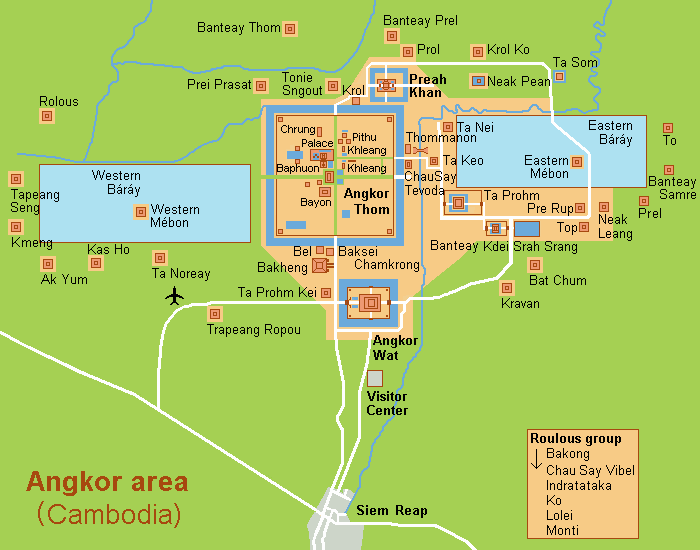
(copyright free image from commons.wikimedia.org)
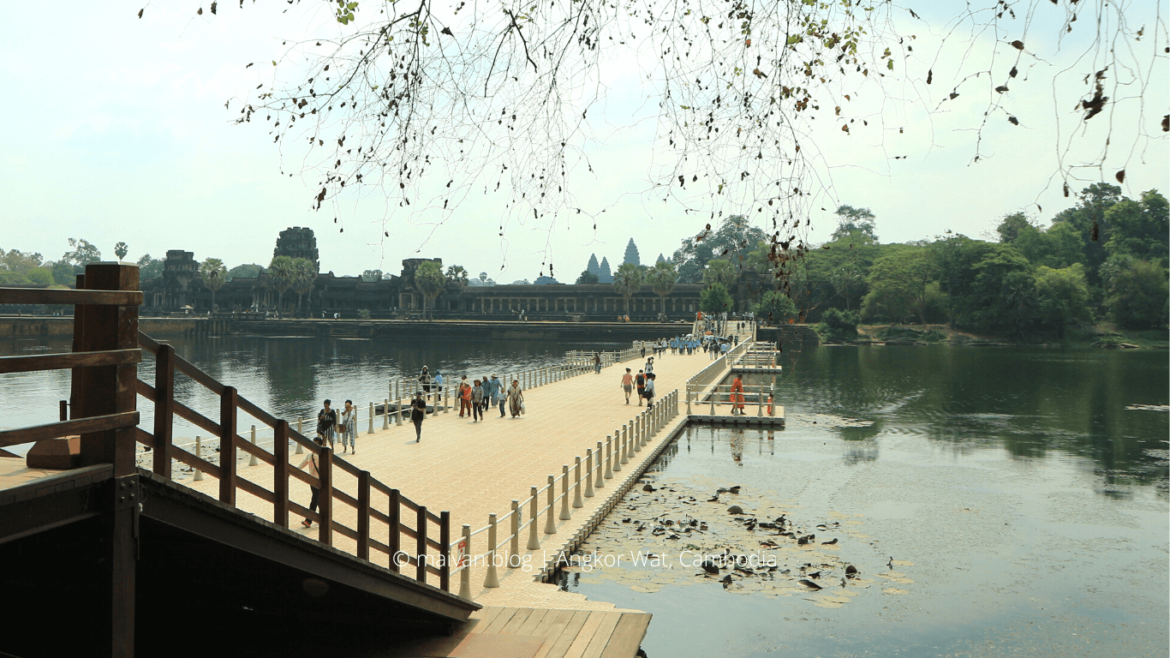
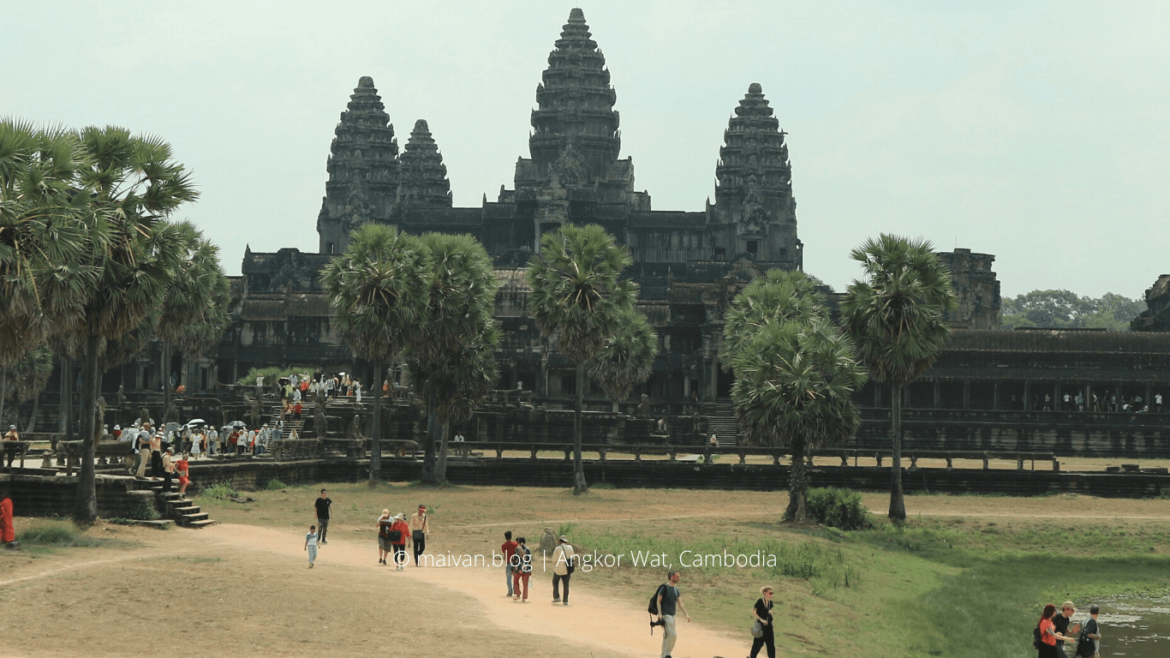
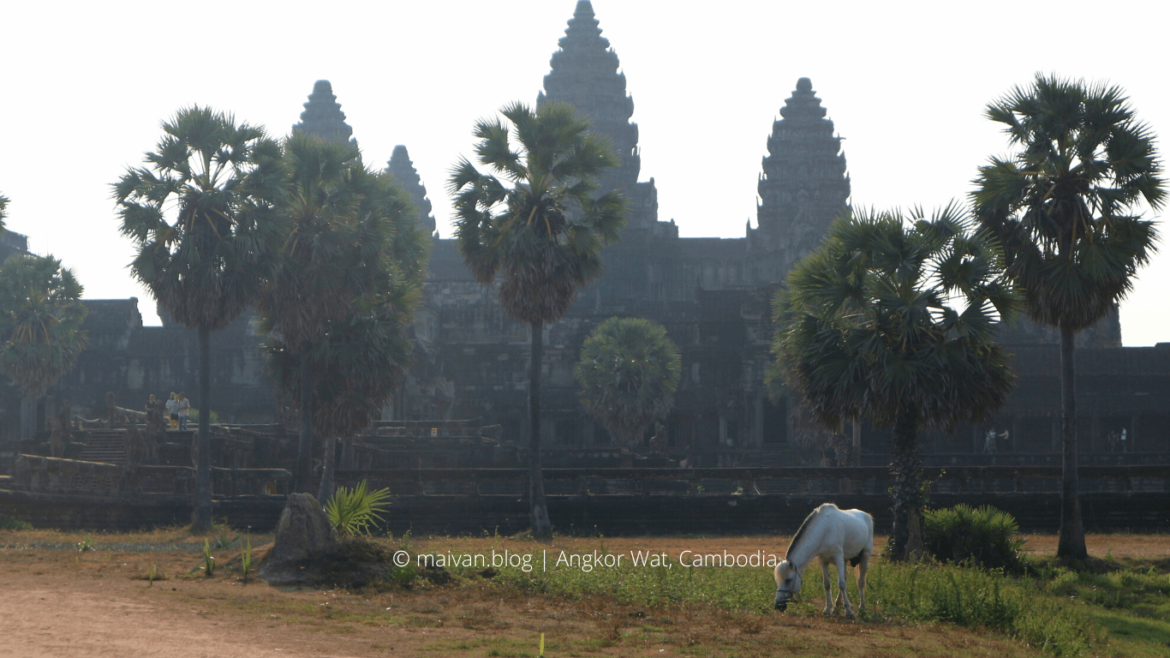
The temple combines 2 major features of Khmer magnificent architecture: a pyramid and concentric galleries. Along the causeway towards the temples, there are 2 large libraries on either side. Libraries were often built each side of the path. You will see more libraries when go deep inside of Angkor Temple. When you reach the entrance gopura of the temples, there are large galleries of Bas-Relief extending to the left and the right. Besides, there are more than 3.000 apsara or apsaras (the beautiful, supernatural female spirits in Hindu and Buddhist religion)carved into the walls in Angkor Wat temples.
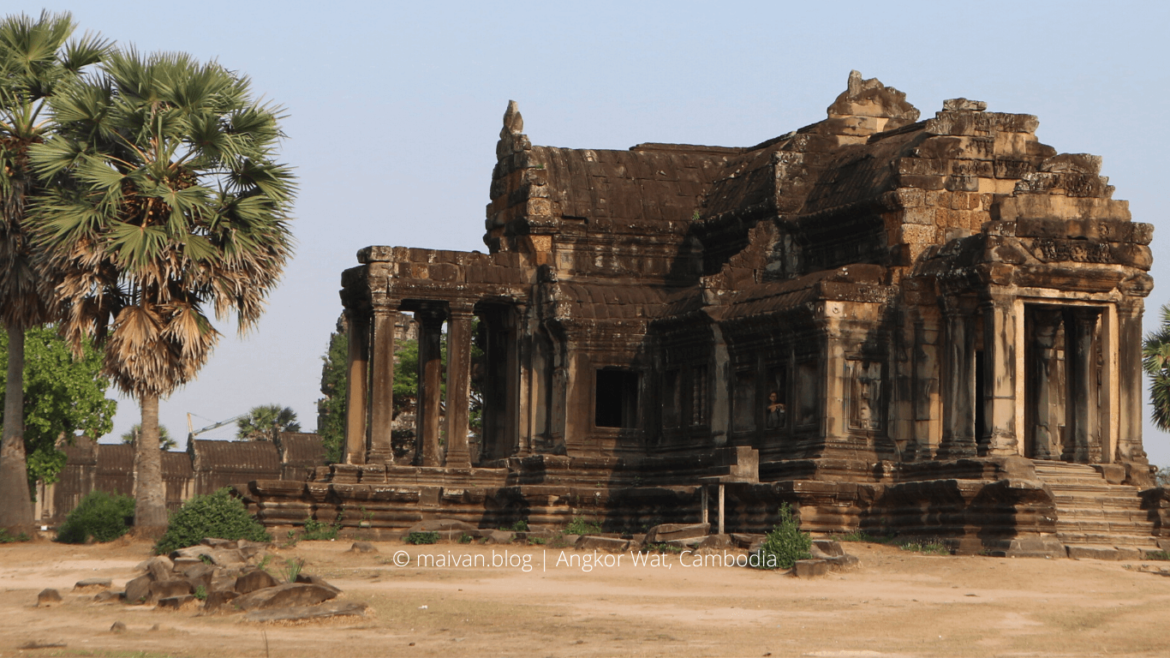
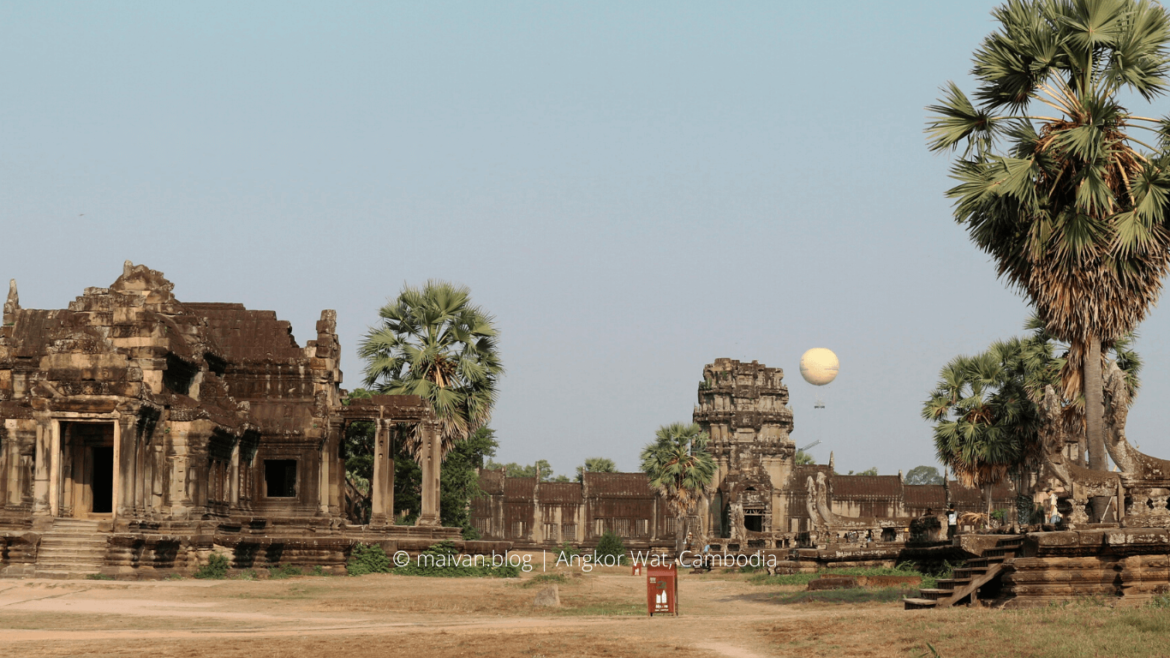
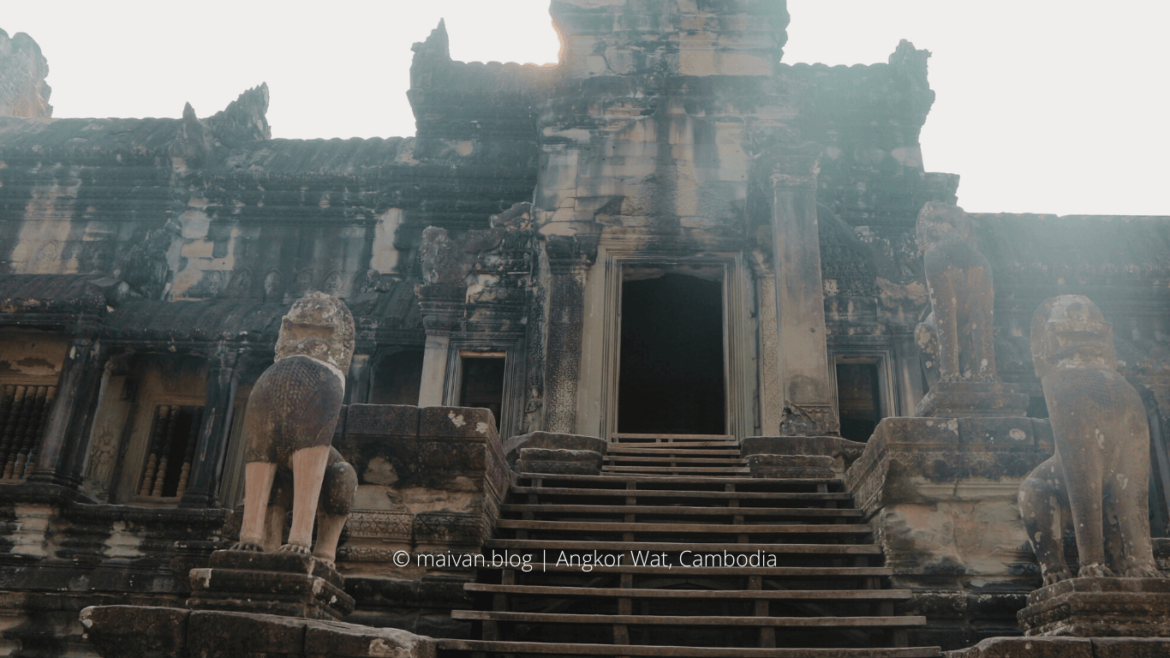
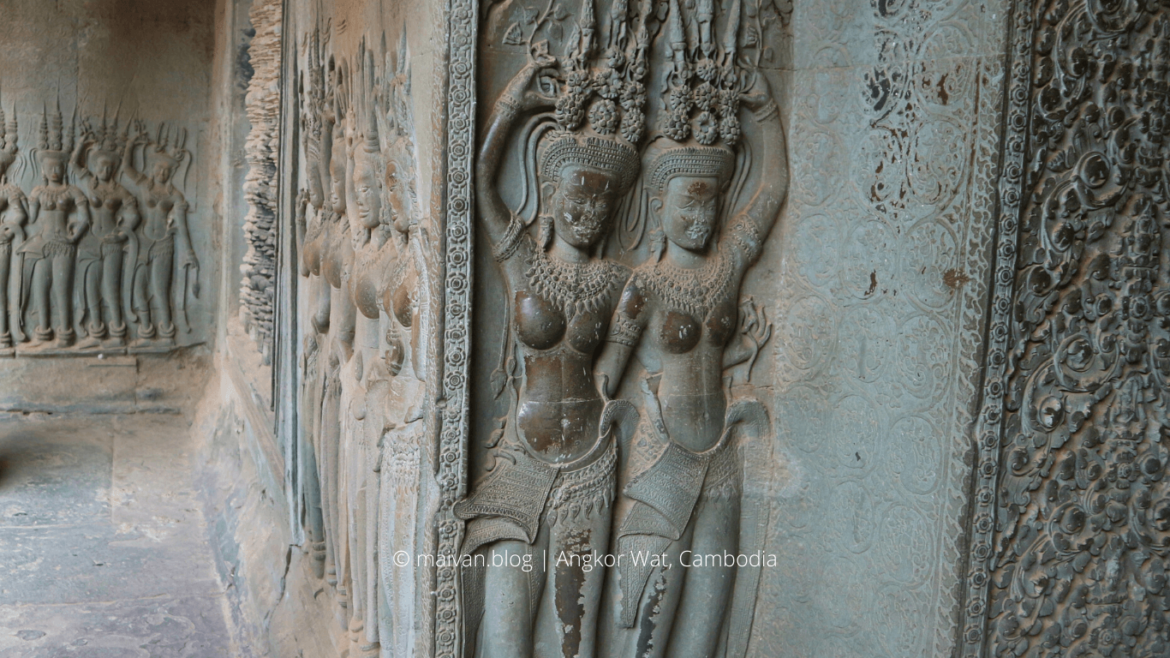
Upper level- Kingdom of God
Open hour: 8am- 5pm daily, (except religious holidays)
At the end of the visiting path, there is the upper level with immensely stairs known as the Kingdom of love. It was actually closed to visitors for a period of time, but it is now open to a limited number of visitors per day and strictly ask for proper dress code. It is impossible for visitors to visit the highest level of Angkor Wat with shorts or top tanks, even with scarf cover your upper hands and shoulders.
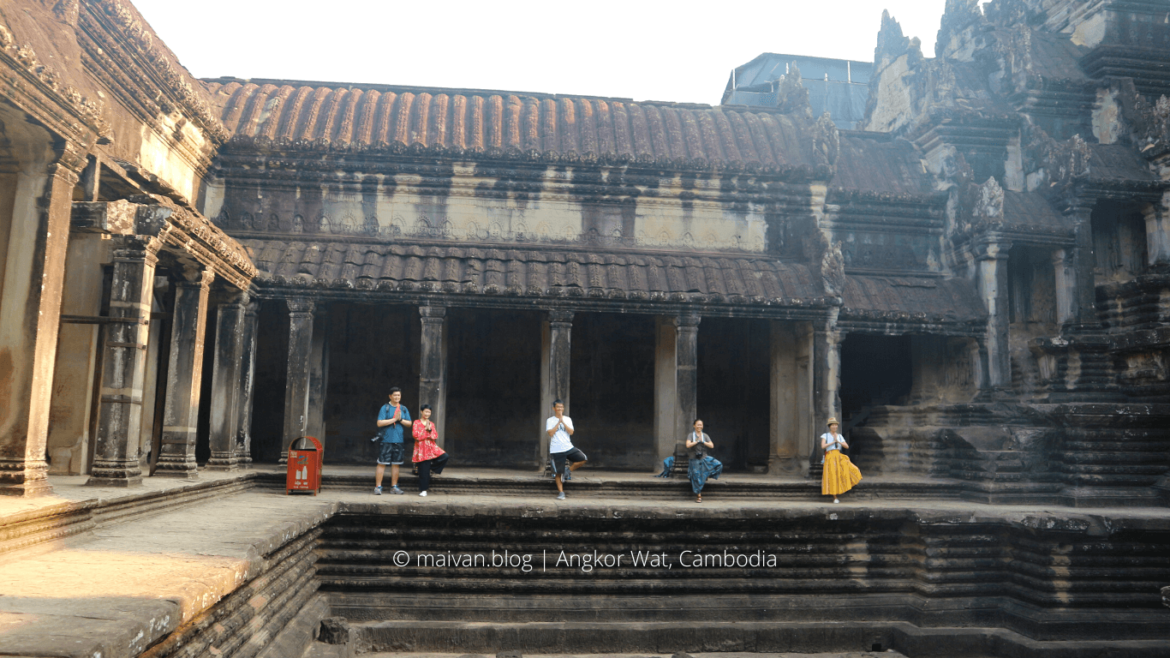
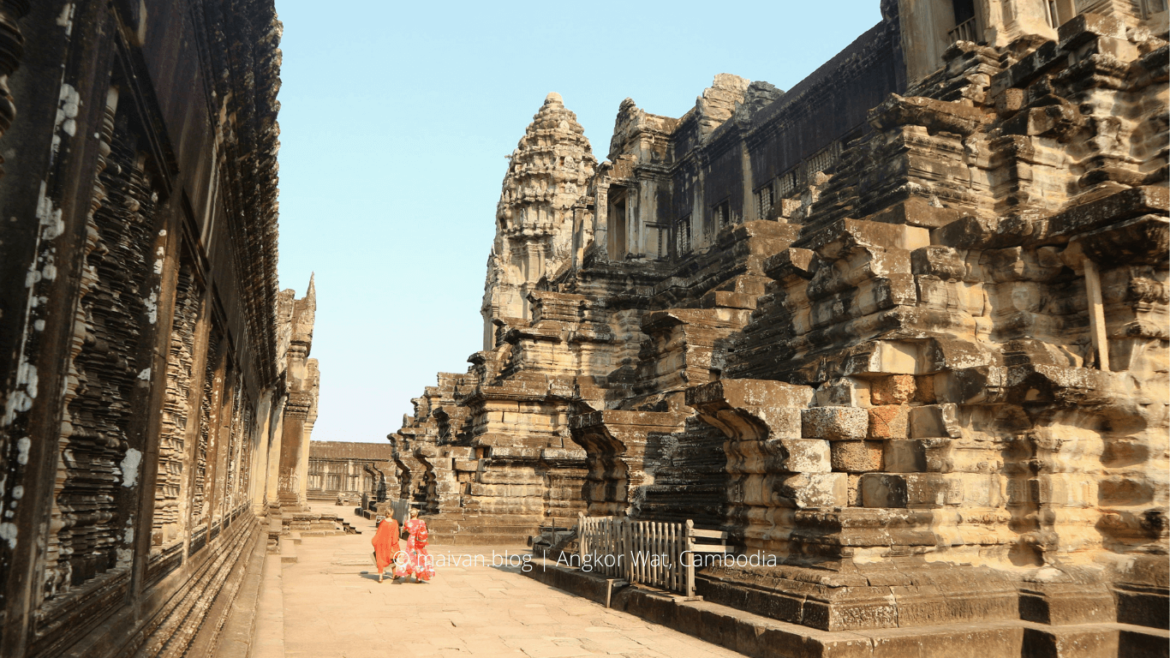
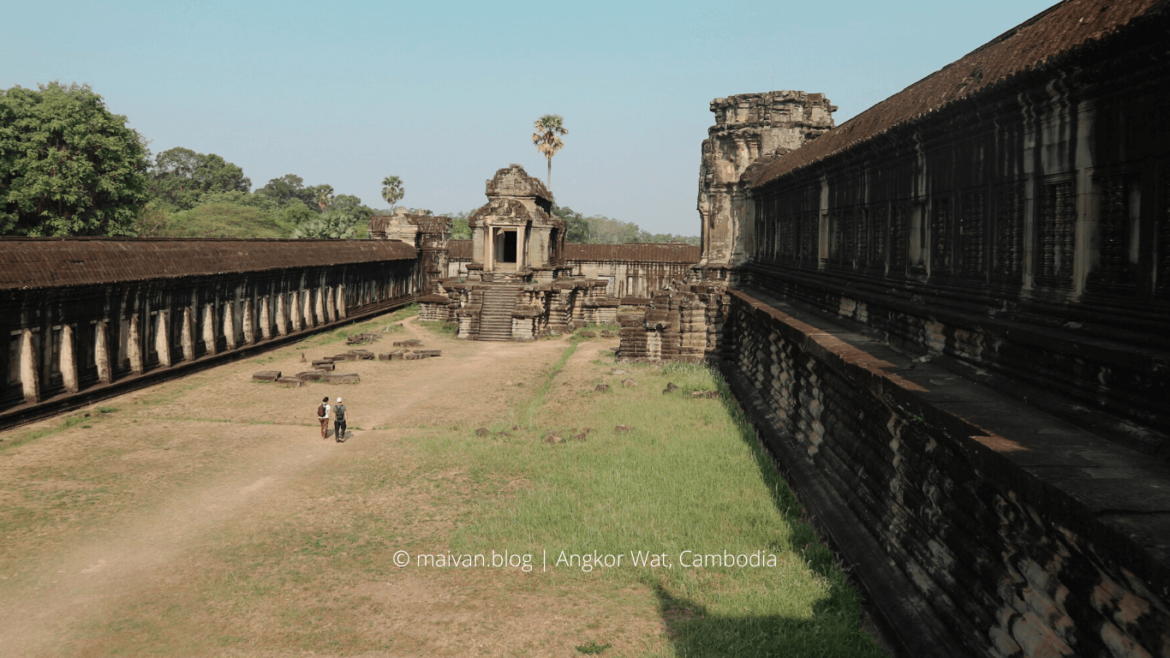
Mythical Animals In Khmer Architecture
1.LION
Lion appears in bas relief as the temples’ guards in front of temple entrance staircases.
2. GARUDA
Supreme god of Vishnu’s vehicles, thus it is the one of the most important motifs. Garuda is also the enemy of Naga.
3. BULL
Nandi is the name of bull in front of many temples and on bas reliefs. It is important simple as it is the vehicle of Shiva. In the beginning of Angkor dynasty, Nandi was mostly scultured as lying bull. Later period, the Nandi sculture is “ready to stand up” posture.
2. NAGA
Naga is serpent god of water, living underground or in the water. With a cobra hood and many odd number of heads. In Khmer art, Naga appears really often in both Buddhist and Hindu construction and mythology. Naga was also a character in many well-known legends and stories in Cambodia.
4. MAKARA
Makara is a mythical sea animal with the body of reptile and a big jaw and scout that is elongated into a trunk. In Khmer temple architecture, the motif of maraka is usually carved on the walls or lintels.
5. TURTLE
In Khmer art turtle is Kurma. Kurma forms to support mount mandara and to present the penetation through the universe.
3. ELEPHANT
Standing sculptures of elephant are the least important animals representing of Khmer art. The elephants cultures are normally placed at the corners of the steps of temples.
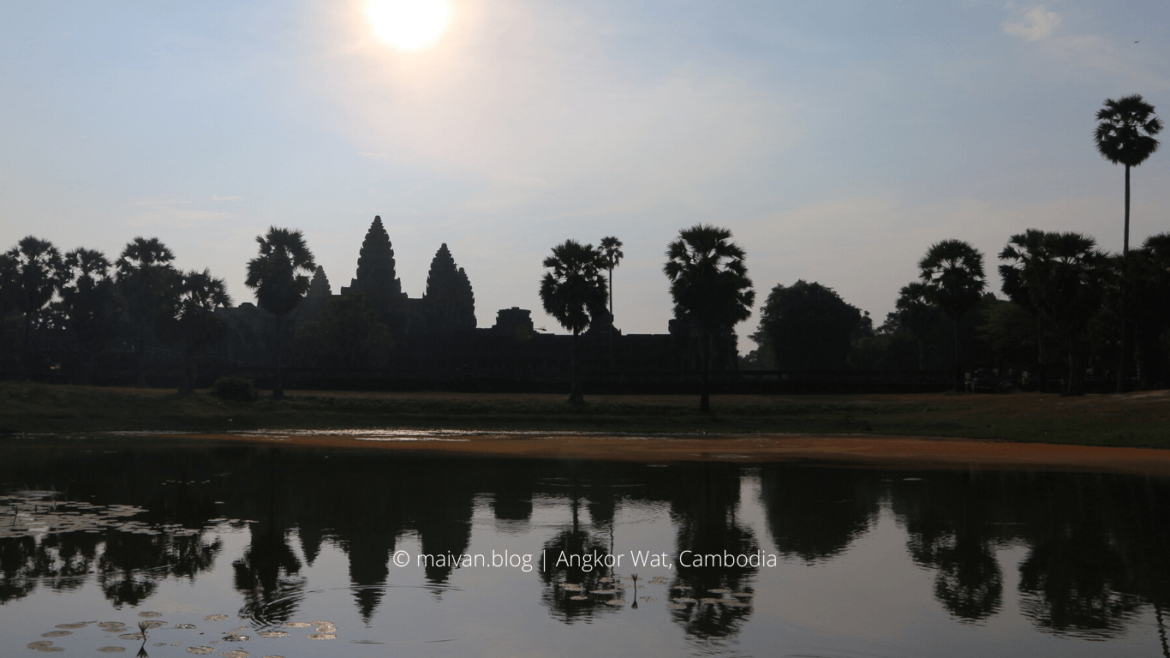
References:
- Michael Freeman, Claude Jacques, Narisa Chakrabongse (ed.). 2003. Ancient Angkor – Books Guides.
- Angkor National Museum, Siem Reap, Campodia. (visited 25-4-2019).
- Wikipedia, the free encyclopedia https://en.wikipedia.org/wiki/Angkor_Wat (Accessed 2019-5-26).
- Tourism of Cambodia,https://www.tourismcambodia.com/attractions/angkor/angkor-wat.htm (Accessed 2020-5-13)
 Tiếng Việt
Tiếng Việt
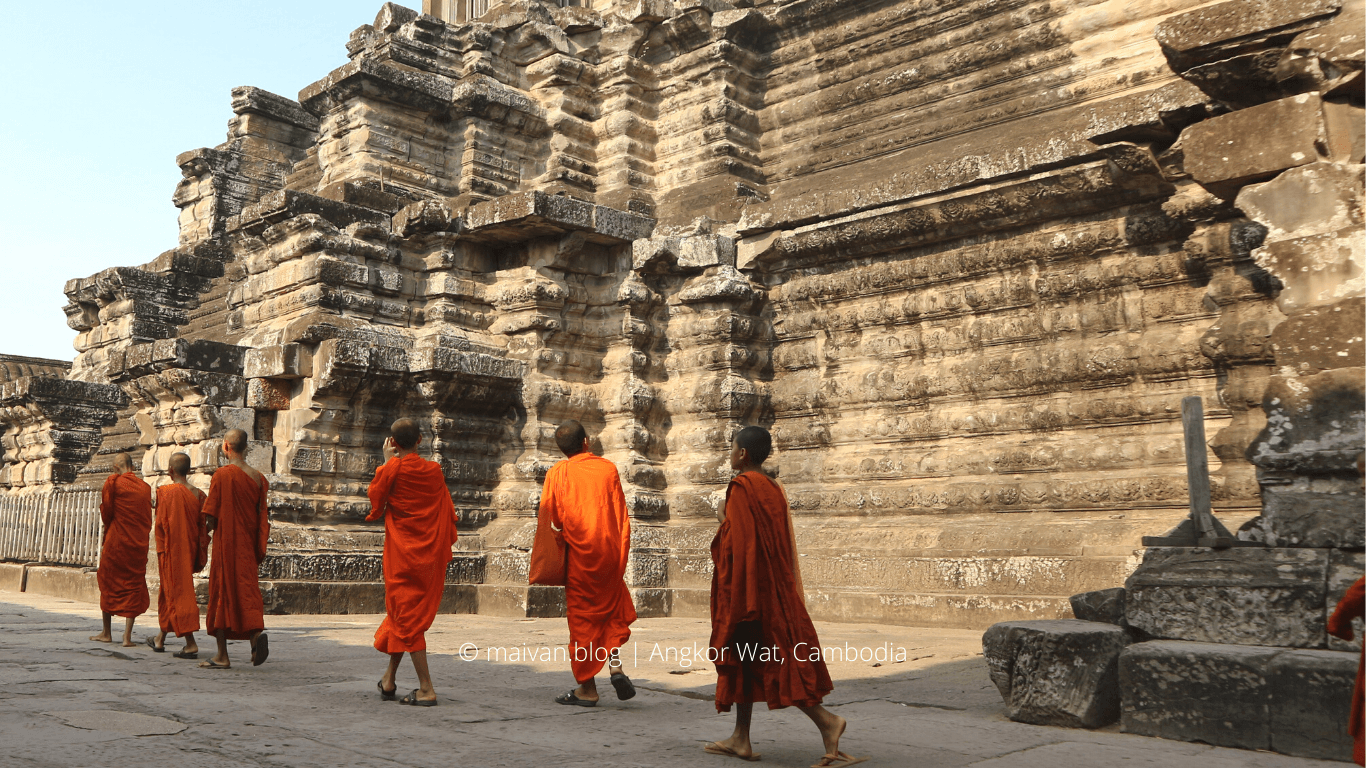
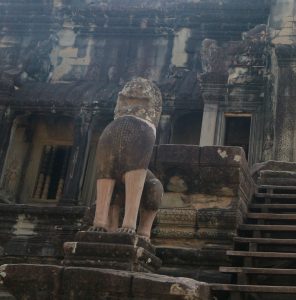
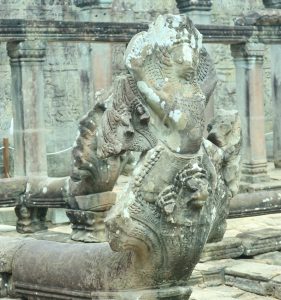

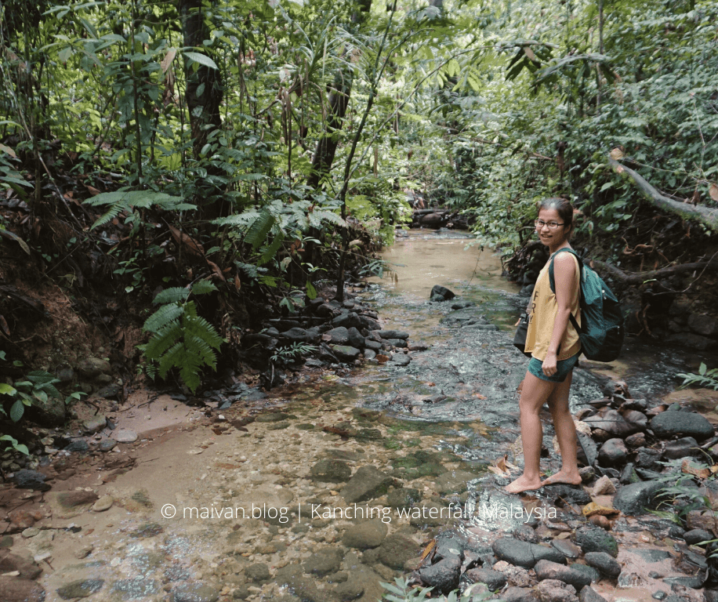





Joana
June 30, 2019OMG I’m an archaeologist and I can’t wait to visit Angkor Wat your post is a great explanation for the place
your post is a great explanation for the place
Joana
June 30, 2019OMG I’m an archeologist and I can’t wait to visit Angkor Wat your post is a great explanation for the place
your post is a great explanation for the place